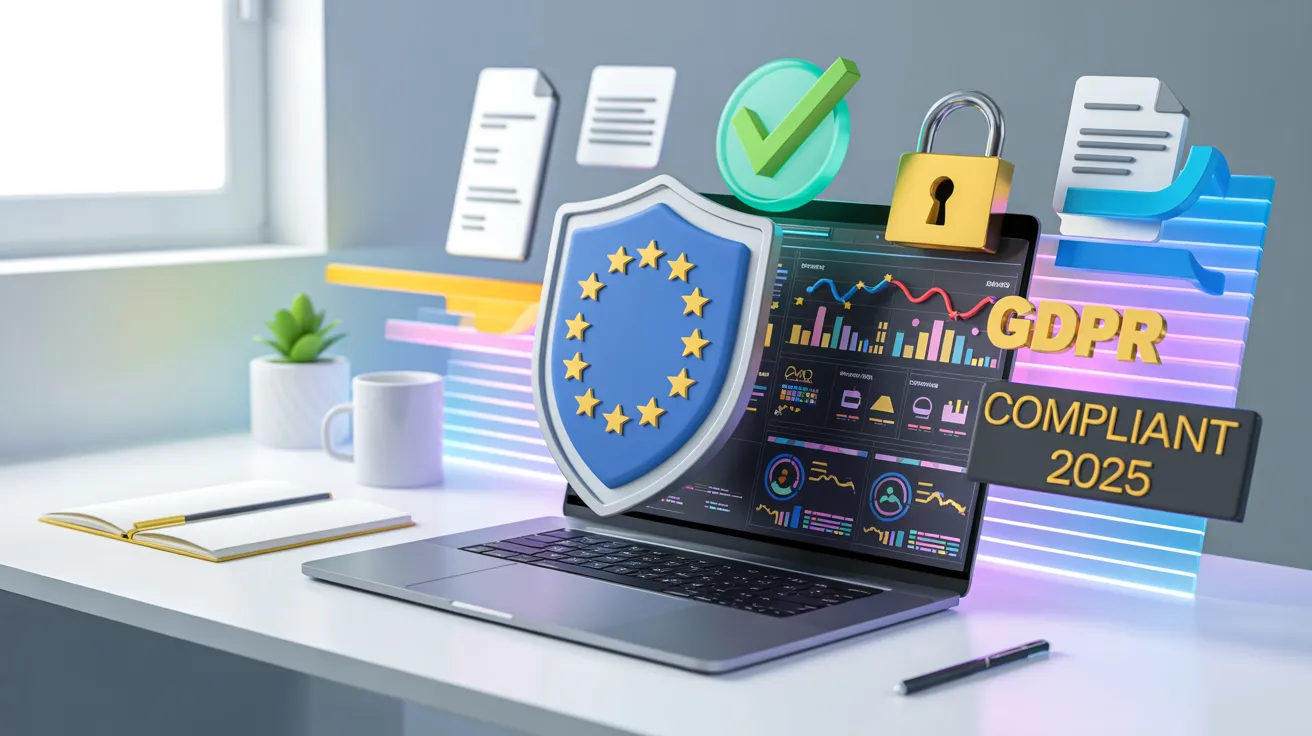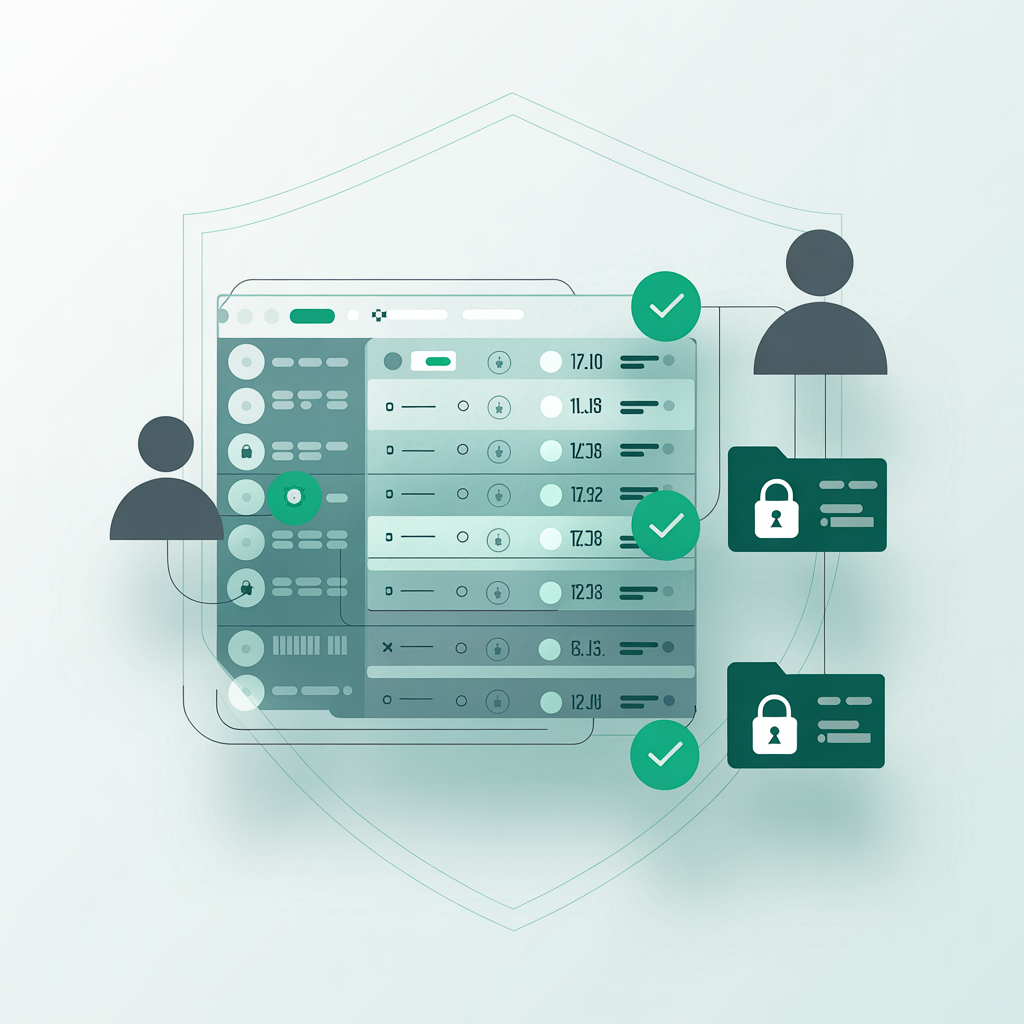GDPR Compliance in Employee Monitoring Software (2025 Review)

Key Takeaways
-
Employee Monitoring must be balanced with data protection and privacy controls to comply with the General Data Protection Regulation (GDPR).
-
The best GDPR compliance software must include automated audit logs, data mapping, data minimization, and incident response management.
-
With growing supervision from the European Union, businesses need compliance solutions that follow privacy-by-design principles in every process.
In this article
- Importance of GDPR compliance in employee monitoring
- GDPR compliance principles
- Employee monitoring best practices for compliance
The old ways of intrusive monitoring have long gone with the introduction of GDPR. It sets strict standards for how employee data is collected, stored, and used. So, choosing a tracking software blindly can burn your business empire to the core.
The good news is that some monitoring tools are just built differently, with ensuring compliance as the number one priority.
In this guide, I will walk you through the details of GDPR compliance guides, best practices, and compare the top GDPR-compliant monitoring software to help you find the right balance between oversight and data protection.
Why GDPR Compliance Is Important for Employee Monitoring Software?
With the GDPR protocol, employee monitoring falls under the data processing category. That means every log, screenshot, and user behavior report falls under personal data regulations. The European Union enforces very strict rules requiring lawful and transparent data processing.
Moreover, the regulations also require strong access controls and data minimization practices.
Besides, non-compliance can be extremely costly if the regulations are not met. In 2024, the French data protection authority slapped Amazon France Logistique with a whopping €32 million fine.
The reason? For “excessively intrusive” monitoring of warehouse staff. Yes, the non-compliance cost can be in millions.
With the Health Insurance Portability and Accountability Act (HIPAA), PIPEDA, and other global frameworks, avoiding GDPR is not a choice. Businesses that embed privacy notices, employee training, and Vendor Risk Management into their workflows see higher employee trust and reduced security incidents.
Stay compliant with privacy-first monitoring
Principles of GDPR Compliance
From managing data properly to being accurate with the data, all are crucial factors for GDPR compliance.

Here are the principles that you need to look for in your employee monitoring software:
Data Management & Data Inventory
GDPR-ready tools generally comply with data management features. The tool should allow documenting all data assets, their purpose, flow, and subprocessors.
Furthermore, the data system should be easily edited & removed, have authentication protocols, and have user rights management.
Tools with centralized compliance management and role-based permissions simplify vendor risk management and third-party oversight.
Data Storage Standards
GDPR requires the following to maintain data storage standards:
- Data retention policies and configuration
- Data duplicate removal
- Proper encryption
- Access controls
- Unauthorized access safeguards
Obviously, depending on the industry, the requirements can vary. GDPR does not strictly require data to be stored within the EU. However, if data is transferred outside the EEA (e.g., to the US), the company must ensure adequate safeguards are in place. For example, Standard Contractual Clauses (SCCs), to protect the data.
Privacy & Confidentiality
Modern compliance solutions must ensure Data Encryption (in transit and at rest), Access controls, and audit trail visibility. Strong privacy controls prevent unauthorized use of personal data and document each access event for evidence collection.
A study shows that employee perception about information privacy has a direct positive effect!
Lawfulness & Transparency
GDPR does not usually allow consent (Article 6(1)(a)) as the legal basis for employee monitoring. Because of the power difference, employee consent is rarely truly free.
So, employees should receive clear privacy statements, transparent policies, and notices describing monitoring purposes, duration, and safeguards, when needed.
Fascinatingly, the younger generation prefers transparent monitoring policies! Hence, if you can be transparent enough, then the Gen Z workers are most likely to agree.
Data Minimization
This is one thing that GDPR is generally strict about. There should be an option to minimize the data you’re storing and the data you’re storing.
There should be options to provide fine-grained controls to exclude personal browsing data, blur screenshots, and limit recording frequency. AI automation can prove to be quite useful when scaling this feature.
Audit Logs & Access Control
Businesses must limit who has access to personal data and keep transparent records of its use to comply with GDPR. Audit logs, role-based permissions, and employee data access for managing data subject access requests are crucial.

Without those, there’s no point in having monitoring software, really.
Accuracy & Accountability
Traceability, accountability, and accuracy are pillars of any software, and that also applies to GDPR compliance. Accurate records and traceability underpin every compliance monitoring system.
On top of that, every data needs to be ready for reporting when needed. Regular audits and compliance measures can easily find any shortcomings in data accuracy.
Data Anonymization & Pseudonymization
To comply tightly with the GDPR, good monitoring software supports anonymous identities. While masking the data protects the employee-level identity, it can be flexible for the manager-level. So, they can easily assign a fake name and check the performance analysis and reports.
Find tools built for data protection today
GDPR-Compliant Employee Monitoring Best Practices
Monitoring will be the best tool when you do it for the employees. And when you follow the GDPR compliant monitoring practices, it automatically becomes a guide for your employees.

Here’s how to make it work the right way:
1. Start with a Risk and Purpose Check
Data Protection Impact Assessment (DPIA) is a must before implementing any type of monitoring in a workplace. This will help you identify if the monitoring is necessary, associated risks, and how to overcome those diligently.
DPIA also helps you streamline the purpose and whether it’s really worth it or not.
2. Choose the Right Legal Basis
When you’re considering GDPR compliant monitoring, it’s bound to follow a legal procedure. Now, there needs to be a strong foundation behind your legitimate interest & benefit for the monitoring.
Furthermore, you have to ensure that your purpose does not collide with workplace privacy laws.
3. Communicate with Transparency
It’s one thing to keep the monitoring transparent on paper, and another drastically different thing to implement it honestly. Your employees are the driving force, so they should not have to second-guess what’s happening with monitoring software.
Communicate transparently how the monitoring will work, conduct training sessions, and implement the policies with consent.
4. Keep It Minimal and Secure
Less is more when it comes to data. If you’re following the GDPR principles of data minimization and purpose limitation, then you’re already on the right track. Also, include a data retention policy to regularly delete outdated data.
Ensure that whatever you store is well-protected. Secure them with encryption, limited access, and audit trails.
5. Protect the Data with Access Restriction
Whatever monitoring software you use, it should definitely include role-based restrictions. Otherwise, it will be hard for you to track which data is being used or modified by whom. By restricting access, you can secure data flow and monitor your employees simultaneously.
Try secure monitoring with full compliance
6. Use Tools Designed for Privacy
Choose monitoring solutions that embrace privacy by design. Basically, the tools that collect minimal data, store it securely, and let you customize transparently without any complications.
However, just having privacy-oriented tools is not enough. You need to train managers to use these tools responsibly, focusing on outcomes, not micromanagement. Otherwise, the whole point of monitoring will be lost.
7. Keep Policies Updated and Employees Empowered
Your monitoring policy shouldn’t be static. Review it regularly to match changing technologies and regulations.
Also, make it easy for employees to exercise their data rights; to access, correct, or request deletion of their data if necessary. When people feel respected, they’re more likely to engage openly.
Employee monitoring best practices to ensure privacy
Employee social media monitoring
Top 7 Monitoring Software Compared for GDPR Compliance
To give you an idea, I have researched 7 different monitoring software solutions and compared their GDPR compliance requirements. Here’s what my research revealed:
Use the best compliant employee monitoring tool
Conclusion
GDPR compliance isn’t just about ticking legal boxes; it’s about building digital trust between companies and their employees. The right monitoring software should empower productivity without breaching privacy boundaries.
Each of the tools above takes a different route to balance visibility and respect for personal data, from Apploye’s transparent activity tracking to Teramind’s full on-premise control.
So, before choosing, evaluate how each platform handles consent, data retention, and user access, not just how well it monitors work.
FAQs
What makes monitoring software GDPR-compliant?
It should support Consent Management, Data Encryption, configurable retention policies, Audit Trail, and Data Processing Agreements to ensure lawful processing of personal data.
How can I handle Data Subject Access Requests (DSAR)?
Choose tools with automated workflows or DSAR management features. They simplify locating, exporting, and deleting data, ensuring transparency and compliance with the General Data Protection Regulation.
What is a Data Protection Impact Assessment (DPIA)?
It’s a risk assessment and analysis process to evaluate how data processing activities affect privacy. GDPR mandates DPIAs for high-risk activities.
What role does employee training play in compliance?
Training and awareness programs ensure teams understand data protection, incident response, and reporting protocols.
How often should compliance be reviewed?
Regular compliance monitoring, audit report reviews, and Vendor Risk Management updates should occur quarterly or whenever third-party vendors or data flows change.

